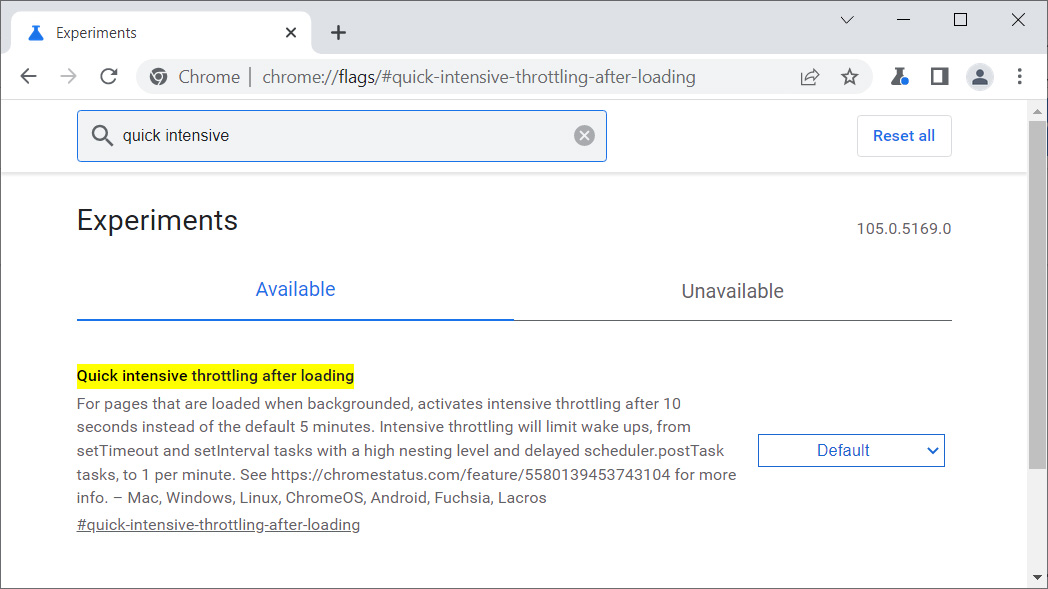
Google is testing a new 'Quick Intensive Throttling' feature that reduces CPU time by 10%, extending the battery life for laptops and mobile devices.
In Chrome 87, Google introduced a new feature called 'Intensive Wake Up Throttling' that prevents JavaScript from waking up a tab more than once a minute after it has been suspended and hidden from view for more than 5 minutes.
With this change, Google found that it reduced Chrome's CPU usage by up to 5x and extended the battery life up to 1.25 hours.
As reported by About Chromebooks, Google is now testing a new feature called 'Quick Intensive Timer Throttling' that reduces the 5-minute grace period to 10 seconds, allowing far more suspended tabs to quickly reduce CPU utilization and extend battery life.
"The JS timer Intensive Wake Up Throttling (Doc) feature has been shipped in 86, which will align the timer wake-ups to 1 minute interval after a grace period of 5 minutes," explains a document on the new Quick Intensive Throttling feature.
"The 5 minutes timeout is very conservative and was chosen to allow a launch of Intensive Wake Up Throttling with minimal regression risk."
"So now we’re considering reducing the timeout to 10 seconds, only for pages considered loaded when they are hidden."
The new feature is being tested in the Chrome Canary and Dev versions, and you can try it by enabling a Chrome flag using the following instructions:
- Install the latest version of Chrome Canary or Chrome Dev.
- Open Chrome Canary or Developer and enter chrome://flags/#quick-intensive-throttling-after-loading in the address bar, as shown below.

The Quick intensive throttling after loading flag
Source: BleepingComputer - Set the 'Quick intensive throttling after loading' flag to Enabled and relaunch Chrome when prompted.
Now that the Quick intensive throttling after loading setting is enabled, you should find that Chrome uses less CPU on the device, and the overall battery life is extended on your device.
Cloud Detection & Response for Dummies
Contain emerging threats in real time - before they impact your business.
Learn how cloud detection and response (CDR) gives security teams the edge they need in this practical, no-nonsense guide.










Post a Comment Community Rules
You need to login in order to post a comment
Not a member yet? Register Now